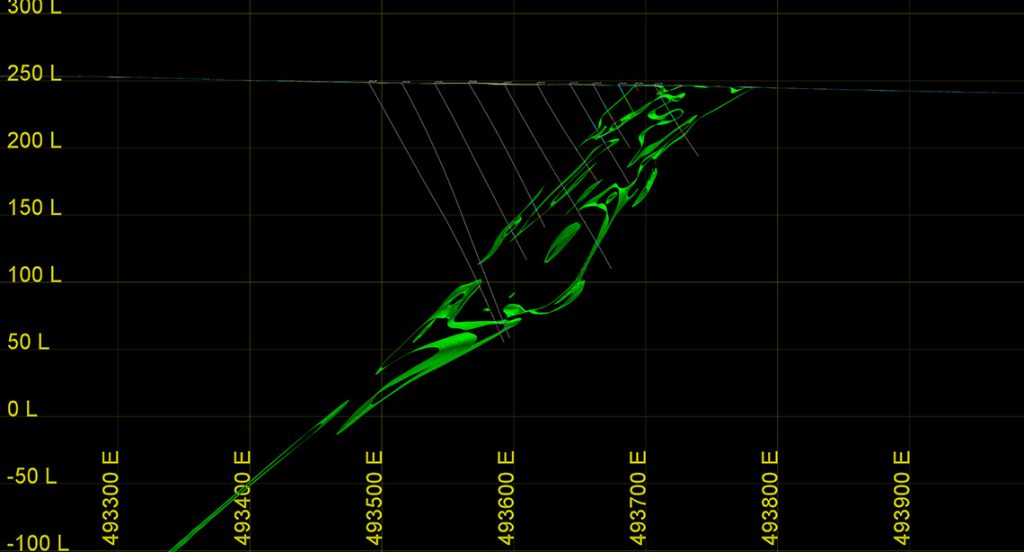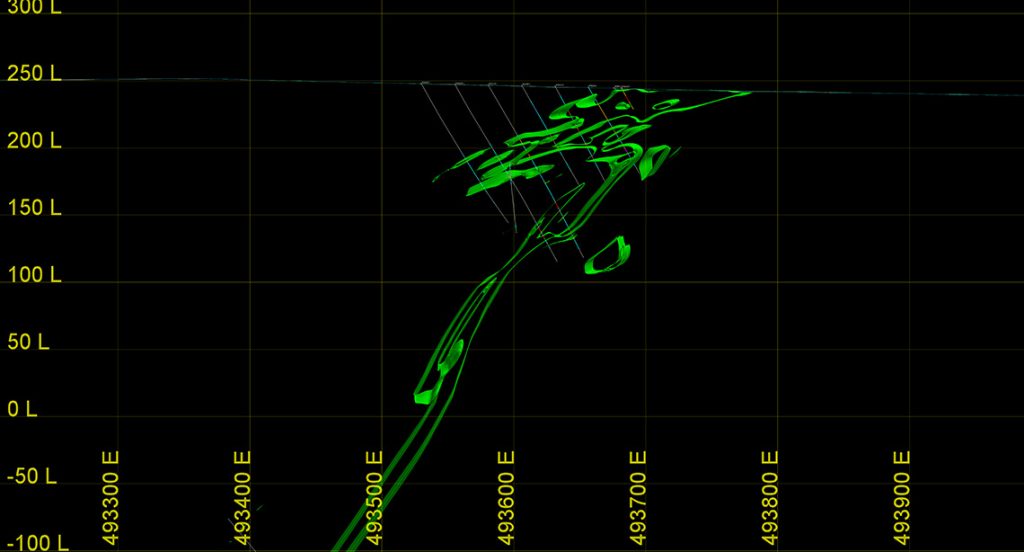December 2023 Issue Index
Using AI to find more copper
Maptek machine learning application DomainMCF helped a South Australian miner plan infill drilling for its copper project to the north east of Adelaide.
Mutooroo is a high grade open pit and underground copper-cobalt-gold project located 40 minutes from Broken Hill.
The host rocks at Mutooroo are high grade metamorphics with sulphide mineralisation lying in a shear zone either within amphibolite or at the gneiss contact. The Mutooroo copper-cobalt ore is a coarse grained, massive sulphide comprising pyrrhotite, chalcopyrite, pyrite and barren quartz.
The current resource at Mutooroo is defined by 300 drillholes, including some diamond drillholes drilled by Broken Hill South Limited in the 1960s. Samples used for resource estimation came from diamond drill core and reverse circulation drilling. Exploration data analysis, variography, block model creation, grade estimation and block model reporting were completed using Maptek Vulcan software.
Havilah Resources has used Vulcan for over 20 years.
The stated sulphide mineral resource at Mutooroo totals 13.1 million tonnes of 1.5% copper and 0.16% cobalt, with 0.2g/t gold. There is also a small oxide resource overlying the main orebody.
Finding copper
The forecast global supply shortfall for copper provided justification for further exploration to extend known resources. With the recent upsurge in the accessibility of artificial intelligence (AI), Havilah Resources applied the method to target downdip extensions to their copper-cobalt mineralisation.


Cross section views (above and below) of the 1000 ppm copper indicator model created by DomainMCF showing untested potential extensions at depth
The Mutooroo drillhole data and topographic surface information were uploaded to the Maptek DomainMCF application and a model was generated within the region defined by the extents of the resource block model. The resulting 3D lithological model shows the complex interaction between the host amphibolite and the sulphide vein lenses.
The next step was to model the copper mineralisation in more detail. Within the database, an indicator was established for samples grading more than 1000 ppm copper.
This copper indicator was then modelled using the DomainMCF cloud compute service. The machine learning application analysed the copper indicators and their spatial distribution in 3D and provided projections for potential extensions to mineralisation. Solid wireframes of the DomainMCF copper indicator were generated in Maptek Vulcan software.
New drillholes were planned to target the AI-generated extensions to mineralisation. Late in 2023, a drill program commenced and at the time of writing the first four holes had successfully intersected copper-cobalt mineralisation close to the depths indicated by the AI model. Drilling continues, with the DomainMCF model updated as preliminary results are confirmed using pXRF results.
The machine learning model can be refreshed in minutes and so the geological/mineralised model is always up to date with the latest results.
Thanks to Chris Giles
Technical Director, Havilah Resources Ltd
- Artificial intelligence generated model identified locations for in-fill drilling to refine the mineralisation model for a copper-gold-cobalt miner
- Historic and recent drillhole data were combined with topographic surface information to feed into machine learning application to target down-dip extensions to mineralisation
- The machine learning model can be refreshed in minutes, ensuring the geological model is always up to date with the latest results

